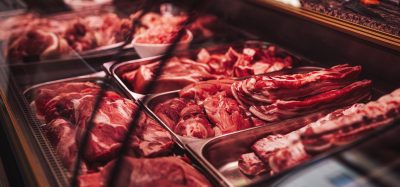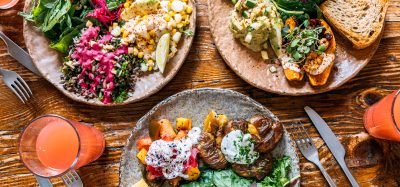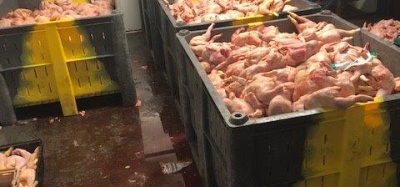The rising tide of food fraud
Posted: 3 July 2025 | Prof Saskia Van Ruth | No comments yet
Dr Saskia Van Ruth, University College Dublin, explains how supply chain disruptions and economic pressures are fueling a rise in food fraud worldwide. Recent cases highlight the urgent need for coordinated prevention efforts, such as the European Food Fraud Community of Practice (EFF-CoP), to protect public health and ensure food integrity.


Exploring the rising risks and evolving nature of food fraud in global supply chains, its impact on public health, and the urgent need for improved prevention measures.
Since people began trading food rather than growing it for their own use, food fraud has been a risk linked to food supply. The practice encompasses various means of deliberately misleading others about the content or value of a food product for illicit profit. In most cases, fraud results in consumers not getting what they paid for, but in some cases ait can result in public health harm with people paying with their health or even their lives.
Not at all a new issue, it started thousands of years ago simple with the adulteration of Staples such as wine, oil, bread, honey, and grains. As foods started to be processed – flour milled and baked into bread, spices ground, and cheese made – food fraud grew gradually1. Since then, food fraud has persisted continuously, but evolving in complexity and especially in the past decades – becoming more sophisticated by criminals understanding better how to avoid detection. On the other hand, the detection methods have also advanced over time, and in the last decade, efforts have increasingly shifted toward food fraud prevention as well – underpinned by science.
How global instability is reshaping food fraud vulnerabilities
Food systems typically maintain a certain balance when it comes to food fraud. Some products and sectors are more susceptible than others, shaped by opportunities, economic incentives and behavioural drivers as well as the strength of controls in place. However, when turbulence enters the system, vulnerabilities shift and this is bad news for food fraud risks. The current global trade landscape, marked by sudden geopolitical shifts, shifting agreements, and rapid policy changes, contributes to the current instability. International supply chains—often long, complex, and reliant on stable trade flows—are being challenged. Transport, particularly maritime shipping, plays a vital role in this system. Recent restrictions and disruptions have introduced new logistical challenges. Container vessels follow fixed, multi-port routes, meaning delays in one location can ripple through entire regions. The shipping sector, especially in Europe, is seeing more delays, route changes, and coordination issues. These logistical strains are beginning to affect both the timing and availability of food products.
In times of uncertainty, the risk grows that some actors take advantage of the situation – not out of need, but out of opportunism.”
Some exporters are postponing shipments, while importers face growing difficulties securing space on vessels. This not only slows trade but also places added pressure on food businesses to meet supply commitments—often under tight margins and rising uncertainty. Hence, beyond the immediate effects of shifting trade agreements, these logistical disruptions bring additional consequences that ripple through the system. When this type of instability takes hold, it causes an enormous shift in food fraud vulnerabilities in the system, with direct consequences for food businesses. In response, businesses react in different ways. Some adapt within the rules, while others may cross ethical lines in an effort to stay competitive or simply survive. In times of uncertainty, the risk also grows that some actors take advantage of the situations – not out of need, but out of opportunism.


Olive oil is a common target for food fraud, with recent cases exposing widespread adulteration that threatens consumer trust and industry standards. Credit Shutterstock.”
Recent food fraud cases: lessons from cinnamon, onions, oil and tea
These developments highlight the interdependent nature of the global food system. Changes in trade policy, logistics, and market dynamics are interconnected, and their combined impact can lead to increased food fraud risks. The presence of uncertainty and strain in supply chains simply rise the tide of food fraud.
This can be seen in different countries where fraud issues had emerged in just the past few years. One example is the US cinnamon scandal. In 2024, the U.S. faced a major food fraud and public health crisis involving this spice. Lead-contaminated cinnamon, imported from Ecuador and used in fruit purée pouches caused lead poisoning in hundreds of children across the U.S. Investigations revealed that the addition of lead chromate to the spice was added to enhance the spice’s colour and weight. The FDA classified the incident as intentional fraud and recalled affected products.
The true cost of this form of crime is likely to be both huge financially and as a public health risk.”
Further recalls were issued for several ground cinnamon brands sold in discount stores due to elevated lead levels. The FDA response was to increase import testing and urging spice suppliers to implement stronger hazard controls. This crisis highlighted vulnerabilities in the global spice trade, particularly in supply chains that are driven by keeping costs low by seemingly any means possible. Countermeasures that can be implemented include the rapid and real-time testing of the authenticity of spices using low-cost portable tools. This is fast becoming the industry standard in well monitored herb and spice supply chains.
Another recent food fraud episode is the case of heavily contaminated onions incident which was resulted in the Philippine authorities seizing over 4 million white onions smuggled into the country from China.
The cargo had been declared as containing processed chicken strips. But upon inspection and laboratory being undertaken on the onions it was revealed they were heavily contaminated with heavy metals and Salmonella. This prompted strong warnings from the Department of Agriculture (DA) against purchasing imported white onions. The DA’s head cautioned that heavy-metal ingestion could lead to cancer or organ damage, while Salmonella could trigger serious food poisoning or even fatalities. The shipment, transported in two containers, with over 34 tonnes of toxic cargo was found to have originated from China. It has been speculated that the cargo had been destined for the U.S. but due to the ‘tariffs war’ had been stuck in transit and to prevent large economic losses was smuggled into a country where it was thought (incorrectly) that the fraud would go undetected.
A third example of recent case of food fraud is with a fraudster’s favourite; olive oil. In late 2024 and early 2025, authorities across Europe uncovered a major olive oil fraud operation. Portuguese regulators seized 16,500 L of low-quality cooking oil mislabeled and sold as olive oil. They also seized 82,000 counterfeit “olive oil” labels, originating from warehouses in the Portuguese cities of Aveiro and Bragança. A joint European law enforcement agency crackdown led to arrests in both Spain and Italy. In total these agencies seized a staggering 260,000 L of adulterated olive oil. The products were low-grade oils mixed into products falsely labeled as virgin or extra virgin olive oil .
Food systems typically maintain a certain balance when it comes to food fraud. Some products and sectors are more susceptible than others, shaped by opportunities, economic incentives and behavioural drivers as well as the strength of controls in place”
A final example of food fraud has been selected to show that no food or beverage is immune from criminal actors. In what has become known as the Scottish tea fraud scandal a web of deceit was unravelled . In May 2025, Thomas Robinson (aka Tam O’Braan) was convicted of two counts of food fraud, having deceived luxury hotels, retailers, and growers into paying inflated prices for “Scottish-grown” tea. Operating as The Wee Tea Plantation, Robinson claimed to have unique tea estates in regions of Scotland. But in reality, he had imported over a tonne of tea from Africa and Italy, repackaged it, and sold it at premium rates. His criminal activities netted him around £550,000 by cheating both industry professionals and genuine Scottish tea growers. The elaborate scam started to unfold after local inspections showed things were not as they seemed and triggered a multi-agency probe led by the Scottish Food Crime and Incidents Unit. Robinson, the rogue trader, is due for sentencing on June 25 and it is hoped that his part of his own future will involve tea drinking will be in a prison canteen. This peculiar case serves to underscore the sophistication of food fraud and how even large and respected businesses can be duped.
The true scale of food crime remains hidden
With the ever-increasing complexities of the global food supply system we can only expect more and more cases of food fraud to be uncovered. But a final even more worrying thought. In all likelihood, most of the criminal activity in the food system goes undetected and the true cost of this form of crime is likely to be both huge financially and as a public health risk.
About the author


Saskia van Ruth is a full professor of Food Supply Chain Integrity at University College Dublin’s School of Agriculture and Food Science. She specialises in food fraud prevention and innovative authentication technologies.
After earning a PhD in food chemistry from Wageningen University in the Netherlands, she spent 10 years in flavour science and subsequently 20 years in food authenticity while affiliated with Wageningen University & Research, University College Cork, Queen’s University Belfast, and now University College Dublin.
References
F.L. Hart, 1952. A history of adulteration of food before 1906. Food Drug Cosmetic Law Journal, 7(1), 5-22.









